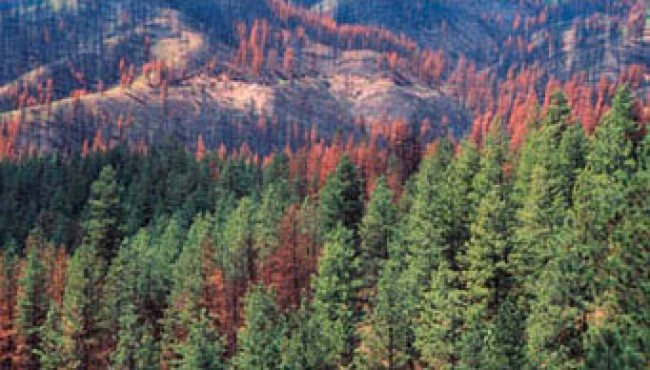Less rainfall in the spring, drought conditions and hotter summers are impacting Washington’s native trees and forest health, says a joint agency report released earlier this year. In collaboration with state and federal agencies, the Washington State Department of Agriculture, Washington State Department of Natural Resources, US Department of Agriculture and US Forest Service published an assessment of private and publicly owned forested lands.
The report found that “drought conditions and warmer, dry spring weather tend to increase tree stress and insect success, driving acres of damage up in both the current and following year.” Using aerial detection surveys to evaluate more than 22 million acres of forested lands, the agencies report that the state has an estimated 469,000 acres of diseased, dying or dead trees. East of the Cascades, “broad swaths of eastern Washington forestland are in an unhealthy state.”
But the effects of the dry, hot weather is particularly pronounced in western Washington, where that region has historically experienced more moderate temperatures and more precipitation than the eastern half of the state. Parched trees caused by drought can weaken a tree’s immune system, making it more susceptible to insect and fungal infestations. The effects of repeated years of drought and hot summers are impacting trees that once thrived in western Washington. Forested areas consisting of western hemlock, Douglas fir, western red cedar and big-leaf maple – all native to western Washington – are struggling, said Kevin Zobrist, a Washington State University forestry professor.
Zobrist believes that the spate of dying of native western Washington trees like the western hemlock is “a warning sign of things to come.” The precipitation-free days and extended summers could lead to some profound changes in the makeup of western Washington’s forested areas. In some cases, trees that were once commonplace may no longer flourish, changing western Washington’s forests, he added.
“This summer was a little bit better,” Zobrist said. “But that cumulative drought stress is really taking its toll.”
In response to the dying trees, many landowners are looking to more drought-tolerant native species, including some pine and fir varieties, to withstand the drier, hotter days.
State and local agencies also are focusing more attention and resources toward promoting healthy, resilient forests. Forest management practices like selective thinning, judicious application of herbicides to prevent grasses and underbrush from competing for water that is vital to trees and reducing excessive animal and pest damage are proven-effective, science-based practices that private forestland owners have adhered to for years to protect trees and promote forest health.
To learn more about the steps needed to encourage healthy forests and the dominant coniferous tree species in Washington state, click on the hyperlinks.
